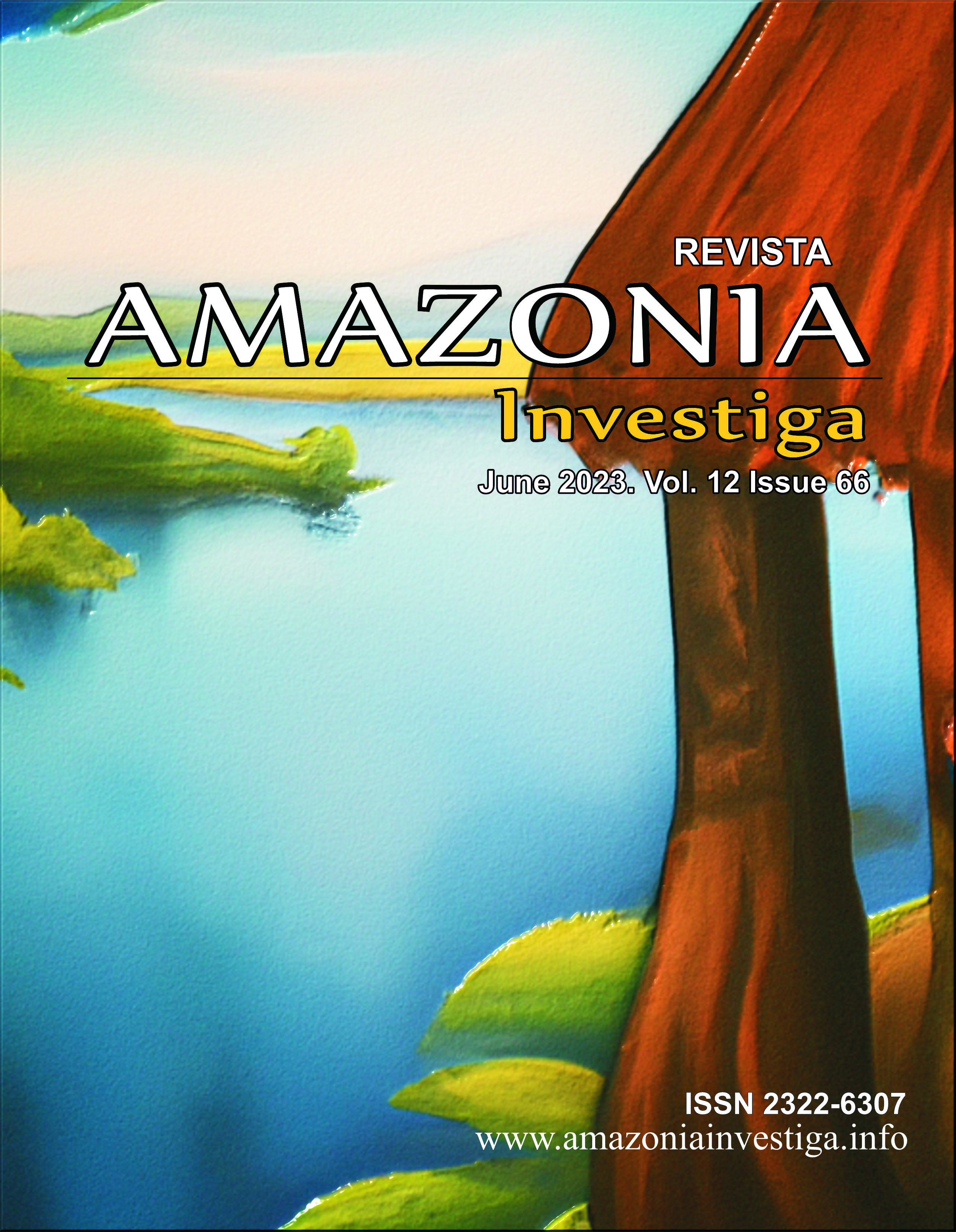The educational technology's impact on youth creativity and innovation: A case of Ha’il region of Saudi Arabia
Publicado 2023-07-30
Palabras clave
- Creativity, innovation, educational technology, Saudi Arabia, Saudi Vision 2030.
Cómo citar
Resumen
Educational technology can play a prominent role in fostering youth creativity and innovation. However, only limited studies have examined the impact of educational technology on youth creativity and innovation. This assessment is especially critical in the context of Saudi Arabia, which has been investing significant resources in higher education and digital transformation initiatives as part of the Saudi Vision 2030. Thus, this research examines the effect of educational technology on university students' creative and innovative capabilities. We used quantitative methodology to accomplish the study's objectives and employed questionnaires. The questionnaires were conducted at the University of Ha’il, Saudi Arabia. The study's findings establish critical parameters for utilizing educational technology to promote university students' creativity and innovativeness throughout their learning process in Saudi Arabia, particularly in developing regions such as Ha'il. The research contributes to the body of knowledge about youth innovation and creativity, particularly in developing countries. Additionally, the study's findings contribute to the realization of Saudi Vision 2030 by raising awareness of the value of accessibility and effective utilization of educational technology in fostering youth creativity and innovation.
Descargas
Citas
Alam, F., Singh, H. P., & Singh, A. (2022). Economic Growth in Saudi Arabia through Sectoral Reallocation of Government Expenditures. SAGE Open, 12, 1–13. https://doi.org/10.1177/21582440221127158
Alhamad, I. A., & Singh, H. P. (2022). Digital technologies and information translucence in healthcare management: An institutional theory perspective for adopting electronic incidence reporting systems. Amazonia Investiga, 11(57), 30-38. https://doi.org/10.34069/AI/2022.57.09.3
Almaiah, M. A., Alamri, M. S., & Al-Rahmi, W. M. (2019). Applying the UTAUT Model to Explain the Students’ Acceptance of Mobile Learning System in Higher Education. IEEE Access, 7, 174673–174686. https://doi.org/10.1109/access.2019.2957206
Azlim, M., Amran, M., & Rusli, M. E. (2015). Utilization of Educational Technology to Enhance Teaching Practices: Case Study of Community College in Malaysia. Procedia - Social and Behavioral Sciences, 195, 1793-1797. https://doi.org/10.1016/j.sbspro.2015.06.385
Baregheh, A., Rowley, J., & Sambrook, S. (2009). Towards a multidisciplinary definition of innovation. Management Decision, 47(8), 1323-1339. https://doi.org/10.1108/00251740910984578
Bharti, P. (2014, July 31). How to Enhance Your Students’ Communication Skills? Does Technology Help? EdTechReview. Retrieved April 30, 2023. From https://acortar.link/w9PwIF
Bravo, F., & Godfrey, L. G. (2012). Bootstrap HAC Tests for Ordinary Least Squares Regression. Oxford Bulletin of Economics and Statistics. https://doi.org/10.1111/j.1468-0084.2011.00671.x
Buallay, A. (2019). Between cost and value. Journal of Applied Accounting Research, 20(4), 481-496. https://doi.org/10.1108/jaar-12-2017-0137
Cachia, R., & Ferrari, A. (2010). Creativity in schools: A survey of teachers in EuropeSeville, Spain: European Commission, Joint Research Centre, Institute for Prospective Technological Studies. Retrieved from: https://publications.jrc.ec.europa.eu/repository/handle/JRC59232
Cecilia, M. R., Di Giacomo, D., & Vittorini, P. (2015). Influence of Gaming Activities on Cognitive Performances. In T. Mascio, R. Gennari, P. Vittorini, & F. De La Prieta (Eds.), Methodologies and Intelligent Systems for Technology Enhanced Learning. Advances in Intelligent Systems and Computing, Vol. 374, pp. 67–72. Springer, Cham. https://doi.org/10.1007/978-3-319-19632-9_9
Cofini, V., di Giacomo, D., di Mascio, T., Necozione, S., & Vittorini, P. (2012). Evaluation Plan of TERENCE: When the User-Centred Design Meets the Evidence-Based Approach. International Workshop on Evidence-Based Technology Enhanced Learning, 11-18. https://doi.org/10.1007/978-3-642-28801-2_2
Courts, B., & Tucker, J. (2012). Using Technology To Create A Dynamic Classroom Experience. Journal of College Teaching & Learning (TLC), 9(2), 121-128. https://doi.org/10.19030/tlc.v9i2.6907
Di Giacomo, D., Caputi, N., & Vittorini, P. (2017). Technology and Learning Processing in Childhood: Enhancing the Children Outcomes. In L. M. Hunt (Ed.), Interactive Learning: Strategies, Technologies and Effectiveness. Hauppauge, NY: Nova Science Publisher.
Di Giacomo, D., Vincenza, C., Di Mascio T., Rosita, C. M., Daniela, F., Rosella, G., & Pierpaolo, V. (2016). The silent reading supported by adaptive learning technology: Influence in the children outcomes. Computers in Human Behavior, 55, 1125-1130. https://doi.org/10.1016/j.chb.2014.09.053
Dori, Y. J., Belcher, J., Bessette, M., Danziger, M., McKinney, A., & Hult, E. (2003). Technology for Active Learning. Materials Today, 6(12), 44-49.
Fichten, C. S., Asuncion, J. V., Barile, M., Fossey, M. E., & De Simone, C. (2000). Access to Educational and Instructional Computer Technologies for Post?secondary Students with Disabilities: lessons from three empirical studies. Journal of Educational Media, 25(3), 179–201. https://doi.org/10.1080/1358165000250303
Glaveanu, V. P., Ness, I. J., Wasson, B., & Lubart, T. (2019). Sociocultural perspectives on creativity, learning, and technology. In C. A. Mullen (Ed.), creativity under duress in education? (pp. 63–82). Cham, Switzerland: Springer.
Griffiths, M. (2002). The educational benefits of videogames. Education and Health, 20, 47–52.
Hair, J. F., Ringle, C. M., & Sarstedt, M. (2011). PLS-SEM: Indeed a Silver Bullet. The Journal of Marketing Theory and Practice, 19(2), 139-152. https://doi.org/10.2753/mtp1069-6679190202
Halunga, A. G., Orme, C. D., & Yamagata, T. (2017). A heteroskedasticity robust Breusch–Pagan test for Contemporaneous correlation in dynamic panel data models. Journal of Econometrics, 198(2), 209-230. https://doi.org/10.1016/j.jeconom.2016.12.005
Henriksen, D., Creely, E., Henderson, M., & Mishra, P. (2021). Creativity and technology in teaching and learning: a literature review of the uneasy space of implementation. Educational Technology Research and Development, 69(4), 2091-2108. https://doi.org/10.1007/s11423-020-09912-z
Henriksen, D., Henderson, M., Creely, E., Ceretkova, S., ?Ernochová, M., Sendova, E., Sointu, E. T., & Tienken, C. H. (2018). Creativity and Technology in Education: An International Perspective. Technology, Knowledge and Learning, 23(3), 409-424. https://doi.org/10.1007/s10758-018-9380-1
Herseim, J. (2019, June 29). What technology can tell us about students’ cognitive skills, and why that matters. District Administration. Retrieved May 30, 2023. From https://acortar.link/Gu7hyl
Hsin, C.-T., Li, M.-C., & Tsai, C.-C. (2014). The influence of young children’s use of technology on their learning: a review. Educational Technology & Society 17, 85-99.
Jiehong, C., Sun, J., Yao, K., Min, X., & Yan, C. (2022). A variable selection method based on mutual information and variance inflation factor. Spectrochimica Acta Part A: Molecular and Biomolecular Spectroscopy, 268, 120652. https://doi.org/10.1016/j.saa.2021.120652
Jones, R. J. (1991). Shaping Educational Technology: Ontario’s Educational Computing Initiative. Educational and Training Technology International, 28(2), 129-134. https://doi.org/10.1080/0954730910280207
Kerawalla, L., & Crook, C. (2002). Children’s Computer Use at Home and at School: Context and continuity. British Educational Research Journal, 28(6), 751-771. https://doi.org/10.1080/0141192022000019044
Kim, E. K. (2020). Understanding the determinants on household electricity consumption in Korea: OLS regression and quantile regression. The Electricity Journal, 33(7), 106802. https://doi.org/10.1016/j.tej.2020.106802
Kim, J. M. (2019). Multicollinearity and misleading statistical results. Korean Journal of Anesthesiology, 72(6), 558-569. https://doi.org/10.4097/kja.19087
Lai, E. R., Yarbro, J., DiCerbo, K. E., & deGeest, E. (2018). Skills for today: What we know about teaching and assessing creativity. Retrieved from: https://acortar.link/AAqR0K
Loveless, A. M. (2007). Creativity, technology and learning – A review of recent literature, (No. 4 update). Futurelab. Retrieved from: https://acortar.link/XgOExY
Lubart, T. (2005). How can computers be partners in the creative process: Classification and commentary on the Special Issue. International Journal of Human-Computer Studies, 63(4–5), 365-369. https://doi.org/10.1016/j.ijhcs.2005.04.002
McCausland, W. J., Miller, S. A., & Pelletier, D. (2021). Multivariate stochastic volatility using the HESSIAN method. Econometrics and Statistics. https://doi.org/10.1016/j.ecosta.2020.07.002
Neo, M., & Neo, T.-K. (2009). Engaging Students in Multimedia-Mediated Constructivist Learning–Students' Perceptions. Journal of Educational Technology & Society 12(2), pp. 254-266.
Peffer, M. E., Beckler, M., Schunn, C. D., Renken, M., & Revak, A. (2015). Science Classroom Inquiry (SCI) Simulations: A Novel Method to Scaffold Science Learning. PLOS ONE, 10(3), e0120638. https://doi.org/10.1371/journal.pone.0120638
Pence, H. E. (2019). Artificial Intelligence in Higher Education: New Wine in Old Wineskins? Journal of Educational Technology Systems, 48(1), 5-13. https://doi.org/10.1177/0047239519865577
Plucker, J. A., & Beghetto, R. A. (2004). Why creativity is domain general, why it looks domain specific, and why the distinction doesn’t matter. In R. J. Sternberg, E. L. Grigorenko, & J. L. Singer (Eds.), Creativity: From potential to realization (pp. 153–168). Washington, DC: American Psychological Association.
Prensky, M. (2001). Digital Natives, Digital Immigrants Part 1. On the Horizon, 9(5), 1-6. https://doi.org/10.1108/10748120110424816
Roschelle, J. M., Pea, R. D., Hoadley, C. M., Gordin, D. N., & Means, B. M. (2000). Changing How and What Children Learn in School with Computer-Based Technologies. The future of children, 76-101.
Runco, M. A., & Leckelt, M. (2012). The Standard Definition of Creativity. Creativity Research Journal, 24(1), 92-96. https://doi.org/10.1080/10400419.2012.650092
Saudi Gazette. (2016, April 26). Full text of Saudi Arabia's Vision 2030. Retrieved from https://acortar.link/FQy98U
Schober, P., Boer, C., & Schwarte, L. A. (2018). Correlation Coefficients. Anesthesia & Analgesia, 126(5), 1763-1768. https://doi.org/10.1213/ane.0000000000002864
Singh, A., Singh, H. P., Alam, F., & Agrawal, V. (2022a). Role of Education, Training, and E-Learning in Sustainable Employment Generation and Social Empowerment in Saudi Arabia. Sustainability, 14(14), 8822. https://doi.org/10.3390/su14148822
Singh, H. P., & Agarwal, A. (2011). Espousal of E-Learning in Adult Education. In Proceedings of the International Conference on Computational Techniques and Artificial Intelligence (pp. 28-31). Pattaya, Thailand: ISEM-Planetary Scientific Research Centre.
Singh, H. P., & Alhamad, I. A. (2022a). Influence of National Culture on Perspectives and Factors Affecting Student Dropout: A Comparative Study of Australia, Saudi Arabia, and Ethiopia. Archives of Business Research, 10(11), 287-300. https://doi.org/10.14738/abr.1011.13508
Singh, H. P., & Alhamad, I. A. (2022b). A Data Mining Approach to Predict Key Factors Impacting University Students Dropout in a Least Developed Economy. Archives of Business Research, 10(12), 48-59. https://doi.org/10.14738/abr.1012.13556
Singh, H. P., & Alodaynan, A. M. M. (2023). The role of educational technology in developing the cognitive and communicative skills of university students: A Saudi Arabian case. International Journal of Advanced and Applied Sciences, 10(7), 157-164. https://doi.org/10.21833/ijaas.2023.07.017
Singh, H. P., & Alshammari, K. (2021). Impacts of Digital Technology-Enabled Personalized and Adaptive Learning on Student Learning Performance: A TOE Framework for Saudi Arabia. International Transaction Journal of Engineering, Management, & Applied Sciences & Technologies, 12(13), 1-12. https://doi.org/10.14456/ITJEMAST.2021.262
Singh, H. P., & Chand, P. (2012). ICT Education: Challenges and Opportunities. In D. Parimala (Ed.), Role of Teachers in Changing Context: Policy and Practice (1st ed., pp. 255–263). Kanishka Publishers, Distributors.
Singh, H. P., Agarwal, A., & Das, J. K. (2013). Implementation of E-Learning in Adult Education: A Roadmap. Mumukshu Journal of Humanities, 5(1), 229-232.
Singh, H. P., Grover, S. T., & Samim, S. A. (2011a). Transformational Role of ICT in Education. In Souvenir of the National Seminar on Learner Centered Interactive Pedagogy: Innovations and Experiments (p. 26). Karnal, Haryana, India: Budha College of Education.
Singh, H. P., Jindal, S., & Kaurav, R. P. S. (2011b). Adult Education and E-Learning. In Proceedings of the National Conference on Turbulent Business Environment: The Road Ahead. Rohini, Delhi, India: Gitarattan International Business School (giBS).
Singh, H. P., Jindal, S., & Samim, S. A. (2011c). A Critical Study on Adoption of E-Learning for Development of Human Resources in Developing Countries. Mumukshu Journal of Humanities, 3(3), 116-120.
Singh, H., & Alhulail, H. N. (2023). Information Technology Governance and Corporate Boards’ Relationship with Companies’ Performance and Earnings Management: A Longitudinal Approach. Sustainability, 15(8), 6492. https://doi.org/10.3390/su15086492
Singh, H., Singh, A., Alam, F., & Agrawal, V. (2022b). Impact of Sustainable Development Goals on Economic Growth in Saudi Arabia: Role of Education and Training. Sustainability, 14(21), 14119. https://doi.org/10.3390/su142114119
Singh, H.P. & Alhulail, H.N. (2022). Predicting Student-Teachers Dropout Risk and Early Identification: A Four-Step Logistic Regression Approach. IEEE Access, 10, 6470-6482, https://doi.org/10.1109/ACCESS.2022.3141992
Steele, P., Burleigh, C., Kroposki, M., Magabo, M., & Bailey, L. (2020). Ethical Considerations in Designing Virtual and Augmented Reality Products—Virtual and Augmented Reality Design With Students in Mind: Designers’ Perceptions. Journal of Educational Technology Systems, 49(2), 219-238. https://doi.org/10.1177/0047239520933858
Thompson, C. C., Kim, R., Aloe, A. M., & Becker, B. J. (2017). Extracting the Variance Inflation Factor and Other Multicollinearity Diagnostics from Typical Regression Results. Basic and Applied Social Psychology, 39(2), 81-90. https://doi.org/10.1080/01973533.2016.1277529
Valgeirsdottir, D., & Onarheim, B. (2017). Studying creativity training programs: A methodological analysis. Creativity and Innovation Management, 26(4), 430-439. https://doi.org/10.1111/caim.12245
Verenikina, I., Harris, P., & Lysaght, P. (2003). Child’s play: computer games, theories of play and children’s development. CRPIT ’03 Proceedings of the International Federation for Information Processing Working Group 3.5 Open Conference on Young Children and Learning Technologies - Volume 34, 99-106.
Vincent-Lancrin, S., Gonzalez-Sancho, C., Bouckaert, M., De Luca, F., Fernandez-Barrerra, M., Jacotin, G., & Vidal, Q. (2019, October 24). Fostering Students’ Creativity and Critical Thinking: What it Means in School. OECD. Retrieved March 26, 2023. From https://acortar.link/PXAx81











